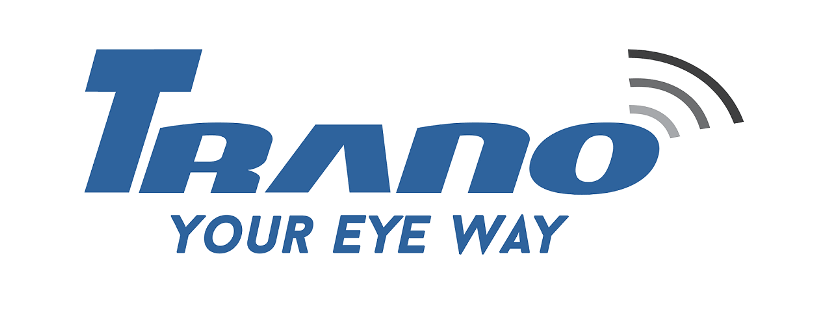Description

Freshservice

Helpshift
Comprehensive Overview: Freshservice vs Helpshift
Freshservice and Helpshift are both service management solutions, but they cater to somewhat different use cases and markets. Here’s an overview of each product:
Freshservice
a) Primary Functions and Target Markets:
Primary Functions:
- IT Service Management (ITSM): Freshservice provides a comprehensive ITSM suite that includes features such as incident management, problem management, change management, and asset management.
- Automation: The platform incorporates automation tools that help streamline workflows and enhance efficiency.
- Self-Service Portal: Offers a self-service feature where users can resolve common issues themselves using a knowledge base.
- Reporting and Analytics: Provides insightful analytics and reporting capabilities for monitoring IT performance.
- Integration Capabilities: Freshservice integrates with various tools and platforms to enhance its functionality and adaptability.
Target Markets:
- IT Teams: Primarily targets IT departments within mid-sized to large organizations seeking to improve their service delivery and efficiency.
- Educational Institutions: Used by educational bodies for managing their internal IT support services.
- Healthcare, Retail, Manufacturing: Sectors looking for robust IT service management solutions.
b) Market Share and User Base:
- Market Share: Freshservice is a part of the larger Freshworks ecosystem, which has seen considerable growth. It's popular among mid-market enterprises and has a significant presence in sectors needing ITSM tools.
- User Base: Includes thousands of organizations worldwide, with a diverse range of industries adopting its IT service desk capabilities.
c) Key Differentiating Factors:
- Ease of Use: Freshservice is known for its user-friendly interface, making it easy for IT teams to adopt and streamline their processes.
- Comprehensive ITSM Tools: Offers a wide range of IT service management features that are well-integrated, allowing companies to manage their IT infrastructure efficiently.
- Affordability: Compared to some legacy ITSM solutions, Freshservice offers competitive pricing, making it accessible to SMBs and larger enterprises alike.
Helpshift
a) Primary Functions and Target Markets:
Primary Functions:
- Customer Support Automation: Helpshift is focused on customer support, especially in-app service. It offers features such as AI-driven chatbots, in-app messaging, and quick resolution capabilities.
- In-App Customer Service: Allows businesses to interact with users directly within their mobile apps, providing seamless support experiences.
- AI and Automation: Utilizes AI to automate repetitive tasks, triage requests, and assists in resolving customer inquiries.
- Feedback and Surveys: Collects user feedback through surveys, helping companies to refine their customer engagement strategies.
Target Markets:
- Mobile-First Companies: Especially targets companies that have a significant mobile presence, such as gaming apps, e-commerce, and mobile services.
- Tech-Savvy Enterprises: Business sectors where digital customer interaction is a significant portion of their strategy.
b) Market Share and User Base:
- Market Share: Helpshift has carved out a niche in in-app customer service solutions and is widely used in the mobile gaming and e-commerce sectors.
- User Base: Trusted by many mobile-first firms, including top mobile game developers and digital service providers reaching millions of users globally.
c) Key Differentiating Factors:
- In-App Support Excellence: Provides unparalleled in-app customer support tools and integration, making it a leader in mobile-first customer service.
- AI and Bot Integration: The advanced use of AI enhances customer interaction by providing fast, automated responses, lowering operational costs.
- Focus on Mobile Experience: Helpshift’s technologies are particularly built for mobile environments, ensuring a native and seamless user experience.
Conclusion:
While both Freshservice and Helpshift are involved in service management, they operate in different spheres—Freshservice in ITSM and Helpshift in customer service automation, particularly within mobile applications. Freshservice is favored for its comprehensive ITSM capabilities across various industries, whereas Helpshift stands out for its mobile-first customer service solutions. The selection between these products should be guided by the specific service management needs—IT infrastructure diversity and management for Freshservice, and customer interaction, especially mobile-centric, for Helpshift.
Contact Info

Year founded :
2011
Not Available
Not Available
United States
http://www.linkedin.com/company/freshserviceitconsulting

Year founded :
2011
+1 800-245-9165
Not Available
United States
http://www.linkedin.com/company/helpshift
Feature Similarity Breakdown: Freshservice, Helpshift
Freshservice and Helpshift are both platforms designed to streamline customer service and support operations, but they cater to somewhat different needs and industries. Let's break down their similarities and differences:
a) Core Features in Common
Both Freshservice and Helpshift offer several core features typical of customer service and IT support platforms:
-
Ticket Management: Both platforms provide robust ticketing systems that allow users to track, prioritize, and manage customer queries and support requests efficiently.
-
Knowledge Base: They both offer capabilities to create and maintain a knowledge base or help center, enabling customers or users to find solutions to common problems independently.
-
Automation: Automation features are available in both to streamline workflows, reduce manual tasks, and improve response times.
-
Reporting and Analytics: Each platform provides tools to measure performance, track customer interactions, and gain insights into support operations through reports and analytics.
-
Integrations: Freshservice and Helpshift both offer various third-party integrations with popular tools to extend their functionality and connect with other platforms.
-
Self-Service Options: They include features that empower users to resolve issues independently, such as FAQs and automated responses.
b) Comparison of User Interfaces
-
Freshservice: Freshservice is designed with a clean, intuitive interface that emphasizes ease of use for IT support teams. Its UI is known for being user-friendly, particularly for technical support teams, with a focus on ITIL-aligned processes.
-
Helpshift: Helpshift has a modern, mobile-first user interface that is particularly appealing for companies focused on mobile app support. The design is sleek and optimized for mobile interactions, providing a seamless experience on smartphones and tablets.
c) Unique Features
-
Freshservice:
- IT Service Management (ITSM): Freshservice is particularly strong in providing ITSM capabilities. It supports change, release, and asset management, making it ideal for IT service desks in organizations.
- ITIL Alignment: Built around ITIL best practices, Freshservice offers robust features for managing change and incident processes in line with IT management frameworks.
- Project Management: It includes features for managing projects related to IT and support, allowing teams to plan, execute, and track project progress.
-
Helpshift:
- In-App Support: Helpshift's standout feature is its in-app support capabilities. It allows businesses to provide real-time assistance directly within mobile apps, enhancing the user experience for mobile-first customers.
- Chatbot Integration: Helpshift has advanced AI-driven chatbots integrated to assist with querying and customer interactions, reducing the need for human intervention.
- Mobile SDKs: Designed with mobile support in mind, Helpshift provides SDKs for easier implementation within mobile applications, enabling things like push notifications and in-app messaging.
Conclusion
While both Freshservice and Helpshift share several core capabilities, their specific features and target audiences are what set them apart. Freshservice is optimized for IT service management and more traditional business IT support, whereas Helpshift shines in providing mobile-first customer support with advanced in-app and AI capabilities. The choice between these platforms should be guided by the specific needs of your organization, focusing on whether a robust ITSM tool or a mobile-centric support solution is more appropriate.
Features

Not Available

Not Available
Best Fit Use Cases: Freshservice, Helpshift
Freshservice and Helpshift are both focused on improving customer service and support operations, but they cater to different types of businesses and use cases. Here's a detailed breakdown of the best fit use cases for each:
Freshservice
a) For what types of businesses or projects is Freshservice the best choice?
Freshservice is an IT service management (ITSM) solution developed by Freshworks. It is primarily designed for internal IT teams and organizations that are looking to streamline their IT operations, improve service delivery, and enhance overall IT support.
-
Business Types: Freshservice is ideal for medium to large enterprises, including those in industries such as finance, healthcare, technology, and education. It is also suitable for businesses undergoing digital transformation or those with extensive IT infrastructure.
-
Projects: Companies working on projects related to IT service management, infrastructure upgrade, digital transformation, compliance management, and asset management will find Freshservice particularly beneficial.
d) How does Freshservice cater to different industry verticals or company sizes?
Freshservice provides a comprehensive suite of ITSM tools, including incident management, problem management, change management, release management, and asset management, among others. It supports industries by offering tailored workflows, automation capabilities, reporting, and analytics to meet specific industry standards such as ITIL. The platform’s scalability makes it effective for both medium-sized businesses and large enterprises, allowing them to expand their operational capabilities without compromising on service quality.
Helpshift
b) In what scenarios would Helpshift be the preferred option?
Helpshift is a customer service platform designed for mobile apps, offering in-app customer support solutions. It is ideal for businesses focused on direct user engagement and instant issue resolution within mobile applications.
-
Business Types: Helpshift is best suited for businesses in the mobile app industry, gaming companies, e-commerce, and digital media industries where the bulk of user interaction occurs within a mobile app.
-
Scenarios: Helpshift is preferred in scenarios where companies need to provide seamless, real-time support to mobile users, manage high volumes of support queries, and leverage AI-driven automation for issue resolution. Helpshift's capabilities in offering push notifications, in-app chat, and automated responses make it a top choice for maintaining high user engagement and satisfaction levels within apps.
d) How does Helpshift cater to different industry verticals or company sizes?
Helpshift caters to various industries by providing in-app chat, self-service FAQs, and AI-powered chatbots to improve the user experience within mobile applications. It supports small to large companies, particularly those in the mobile, gaming, and digital services sectors, by enabling them to provide instant, accessible customer support. The platform easily scales as users grow, accommodating businesses ranging from startups to established enterprises that require robust mobile customer engagement strategies.
By targeting distinct business needs and scenarios, Freshservice and Helpshift provide specialized solutions tailored to different industry requirements and company sizes. Freshservice excels in IT service management, whereas Helpshift shines in delivering mobile-centric customer support.
Pricing

Pricing Not Available

Pricing Not Available
Metrics History
Metrics History
Comparing teamSize across companies
Conclusion & Final Verdict: Freshservice vs Helpshift
When evaluating Freshservice and Helpshift, both platforms offer unique strengths tailored to different customer needs. Here’s a comprehensive breakdown:
Conclusion and Final Verdict
a) Best Overall Value
Freshservice offers the best overall value for businesses seeking a comprehensive IT service management (ITSM) solution. It excels in providing a wide array of features for IT support, including asset management, incident management, and automation capabilities, which are critical for organizations heavily reliant on IT infrastructure. This makes it particularly valuable for mid-sized to large organizations in various industries beyond just customer support.
Helpshift, on the other hand, excels in providing a mobile-first customer service platform. It is particularly valuable for businesses focusing on enhancing the mobile customer experience, such as app developers and mobile-focused companies. While Helpshift is excellent within its niche, Freshservice's broader applicability and feature set give it a slight edge in overall value for a wider audience.
b) Pros and Cons
Freshservice
Pros:
- Comprehensive ITSM Features: Offers robust features for incident management, change management, and asset management, making it ideal for businesses with complex IT needs.
- User-Friendly Interface: Known for its intuitive UI which reduces the learning curve for new users.
- Automation Capabilities: Strong automation features to streamline workflows and improve efficiency.
- Integration and Customization: Easily integrates with other Freshworks products and a multitude of third-party apps.
Cons:
- Price for Smaller Teams: It can be more expensive for smaller teams or startups, as many advanced features are available at higher pricing tiers.
- Overwhelming for Non-IT Users: Some features may be excessive for businesses without a strong IT infrastructure.
Helpshift:
Pros:
- Mobile-First Approach: Optimized for mobile customer support, making it ideal for app developers and companies whose users interact primarily via mobile devices.
- AI and Automation: Features AI-driven chatbots and automation for handling routine queries, reducing the load on human agents.
- In-App Support: Incorporates in-app messaging and support, enhancing customer experience on mobile platforms.
Cons:
- Niche Focus: Primarily geared towards mobile and app-based businesses, which may limit its appeal for other companies.
- Limited Traditional IT Features: Lacks traditional ITSM features, making it unsuitable for companies that need comprehensive IT support software.
c) Recommendations for Users
- For IT-Focused Organizations: If your primary need is IT service management or you have complex IT requirements, Freshservice is the better choice due to its comprehensive ITSM capabilities.
- For Mobile-Centric Businesses: If your business revolves around mobile applications and you require a platform that enhances customer experience directly within mobile apps, Helpshift is more aligned with your needs.
- Evaluate Business Needs: Businesses should carefully evaluate their specific requirements, such as whether they need more comprehensive IT management tools or a specialized mobile customer support platform.
- Consider Future Growth: Consider how each platform will scale with your business. Freshservice might offer broader long-term value as your company grows and your IT needs expand.
In summary, the decision between Freshservice and Helpshift should be based on the core needs of your business, with Freshservice being better suited for comprehensive IT management and Helpshift excelling in mobile customer support.
Add to compare
Add similar companies




